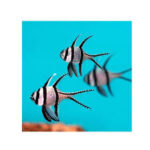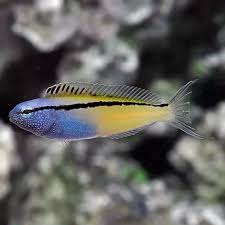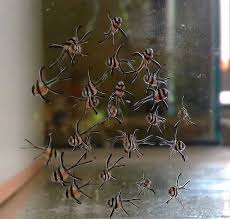The dragon has been one of the most enduring symbols in traditional art across many cultures. In Chinese culture, dragons (lóng, 龙) represent power, wisdom, prosperity, and protection, making them a central motif in artistic expression. Over the centuries, the depiction of dragons has evolved across various artistic forms, from intricate handicrafts and embroidery to grand sculptures and architectural designs.
This article explores how dragons have been portrayed in traditional art, focusing on their role in crafts, painting, ceramics, metalwork, sculpture, and architecture. Through these diverse forms, the dragon continues to be a bridge between mythology, craftsmanship, and cultural identity.
1. Dragons in Handicrafts: Weaving Symbolism into Everyday Life
Embroidery and Textile Arts
Dragons have been a prominent motif in Chinese embroidery and textile arts for centuries. Imperial robes, known as longpao (龙袍), were decorated with golden dragon patterns to signify the emperor’s divine authority. These robes were often made of silk and embroidered with meticulous detail, ensuring that every scale, claw, and expression of the dragon conveyed its symbolic meaning.
In addition to imperial garments, dragons were commonly woven into decorative textiles such as tapestries, banners, and cushion covers, often used in palaces and temples. The presence of a dragon motif was believed to bring good fortune, strength, and protection to the wearer or owner.
Paper Cutting and Shadow Puppetry
The art of Chinese paper cutting (jianzhi, 剪纸) has long included dragon designs, especially during festivals such as the Lunar New Year. These delicate and symmetrical designs, cut from red paper, are often displayed on windows and doors to invite prosperity.
Similarly, in traditional Chinese shadow puppetry, dragon figures were carved from translucent leather and painted with vibrant colors. These puppets played key roles in performances that depicted legendary tales, such as the dragon’s control over rain and rivers.
2. Dragons in Painting and Calligraphy
Traditional Chinese Ink Paintings
Dragons have been a favorite subject in traditional Chinese ink paintings, especially in the shui-mo hua (水墨画) style. These paintings often depict dragons soaring through clouds, emerging from mist, or controlling the elements. Unlike Western dragon depictions that emphasize physical detail, Chinese dragon paintings often use expressive brushstrokes to convey movement and spiritual energy.
One famous example is the Nine Dragons scroll (九龙图卷) by Chen Rong, a Song Dynasty artist. This masterpiece portrays dragons dynamically interacting with water and clouds, emphasizing their connection to nature.
Calligraphy and Dragon Characters
Chinese calligraphy often integrates dragon imagery into artistic script. Some calligraphers stylize the Chinese character for “dragon” (龙 or 龍) to resemble the mythical creature itself. These works combine the fluidity of brush strokes with symbolic representation, making them both linguistic and visual art forms.
3. Dragons in Ceramics and Pottery
Dragon Motifs in Porcelain
Dragons have been a defining feature of Chinese ceramics, especially on porcelain from the Ming (1368–1644) and Qing (1644–1912) dynasties. The famous blue-and-white porcelain vases frequently feature dragons amidst clouds and waves, symbolizing imperial power and divine protection.
The dragon designs on ceramics were carefully painted by skilled artisans, who used cobalt blue underglaze to create intricate patterns before firing the porcelain in kilns. These pieces were highly valued both in China and abroad, influencing ceramic art in Japan, Korea, and Europe.
Celadon and Dragon Reliefs
Celadon-glazed pottery, especially from the Song Dynasty, also featured dragon motifs. Unlike the detailed paintings on porcelain, celadon pottery often included dragon reliefs—raised designs sculpted onto the ceramic surface before glazing. These dragons, intertwined with waves or clouds, showcased the artisan’s mastery of both form and symbolism.
4. Dragons in Metalwork: From Armor to Ritual Objects
Bronze and Gold Dragons in Ancient China
Since the Shang (1600–1046 BCE) and Zhou (1046–256 BCE) dynasties, dragons have appeared in Chinese bronze work. Ritual vessels, known as ding (鼎) and gui (簋), were often adorned with dragon motifs, symbolizing the connection between rulers and the heavens.
Gold and jade dragon ornaments were also crafted as status symbols for nobility. These finely detailed pieces, often inlaid with precious stones, were worn as accessories or embedded into ceremonial weapons.
Dragon Designs in Weapons and Armor
During the Ming and Qing dynasties, dragon motifs were frequently engraved on swords, shields, and armor. The presence of dragons on these items was not just decorative—it symbolized protection and strength, reinforcing the warrior’s power in battle.
5. Dragons in Sculpture: From Temple Guardians to Monumental Works
Stone and Wood Carvings
Sculpted dragons have long been used as architectural ornaments in Chinese temples, palaces, and bridges. Stone carvings of dragons often appear in temple entrances, believed to guard against evil spirits.
Wooden dragon carvings are another significant art form, found on temple beams, altars, and furniture. These detailed carvings showcase the dragon’s dynamic posture, emphasizing movement and fluidity even in static material.
Dragon Columns and Pagoda Decorations
Many traditional Chinese pagodas and bridges feature dragon-adorned columns, reflecting their divine role in supporting the structure and ensuring its stability. The Nine-Dragon Wall (Jiulong Bi, 九龙壁), found in places like the Forbidden City and Beihai Park, is a famous example of dragon relief sculpture. These glazed-tile walls depict dragons in vivid colors, symbolizing imperial majesty and cosmic harmony.
Giant Dragon Sculptures
Large-scale dragon sculptures can be found in modern interpretations of traditional Chinese art. The most iconic example is the Yellow River Dragon sculpture, an enormous golden dragon rising from the waters, symbolizing China’s rich cultural heritage and the river’s significance in the nation’s history.
6. Dragons in Traditional Architecture: Guardians of Space and Time
Temple and Palace Roofs
Dragons are commonly found on the roofs of traditional Chinese buildings. In imperial architecture, dragons are often placed at the corners of palace roofs to symbolize protection and the emperor’s divine authority. The number of dragons on a roof indicated the building’s importance—more dragons signified higher status.
Dragon-Inspired Bridges
Dragon bridges, such as those found in ancient water towns, feature railings or arches carved with dragon motifs. These bridges are not only functional but also artistic masterpieces that blend architectural design with mythological symbolism.
Conclusion
Dragons have played a vital role in traditional Chinese art, appearing in everything from textiles and paintings to sculptures and architecture. Each art form—whether embroidery, ceramics, or monumental sculpture—captures a different aspect of the dragon’s power, wisdom, and auspicious energy.
Despite changes in artistic trends, dragons continue to be a source of inspiration in contemporary art and design, maintaining their legacy as one of the most significant symbols in Chinese culture. Through their presence in traditional crafts and monumental works, dragons bridge the past with the present, ensuring that their mythological and artistic influence endures for generations to come.










